21 Game-Changing Garage Sale Organization Tips for Maximum Profit
Planning a successful garage sale involves much more than simply putting your unwanted items on the lawn with price tags.
A well-organized sale not only attracts more customers but also helps you earn significantly more money while making the entire process less stressful.
The key lies in thoughtful preparation and strategic setup that makes shopping easy and enjoyable for your visitors.
With the right organization system, you’ll sell more items faster and with less haggling.
Whether you’re a first-time seller or a seasoned pro looking to improve your results, these 21 garage sale organization tips will help you create a shopper-friendly experience that converts browsers into buyers.
1: Category-Based Organization
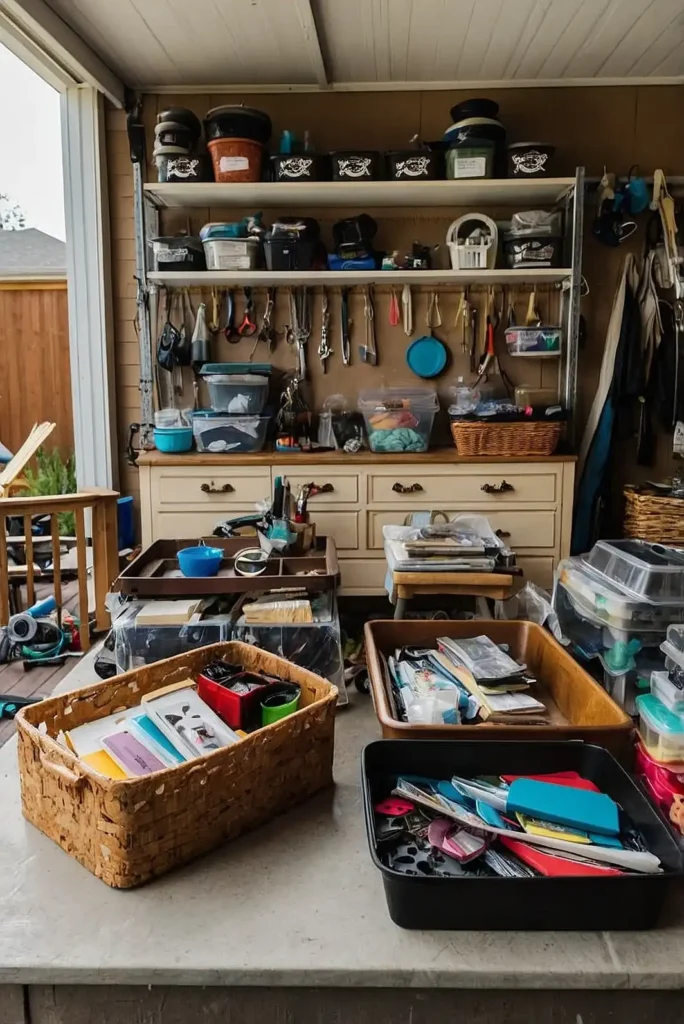
Arrange your items by clear categories instead of random groupings.
Create dedicated sections for kitchenware, clothing, toys, books, electronics, and furniture to help shoppers find exactly what they’re looking for.
This intuitive organization mimics retail stores and helps customers quickly locate items in their interest areas.
You’ll also identify which categories you have in abundance versus those needing supplementation.
Place related categories near each other to encourage natural browsing flow between complementary sections.
2: Multi-Level Display Tables
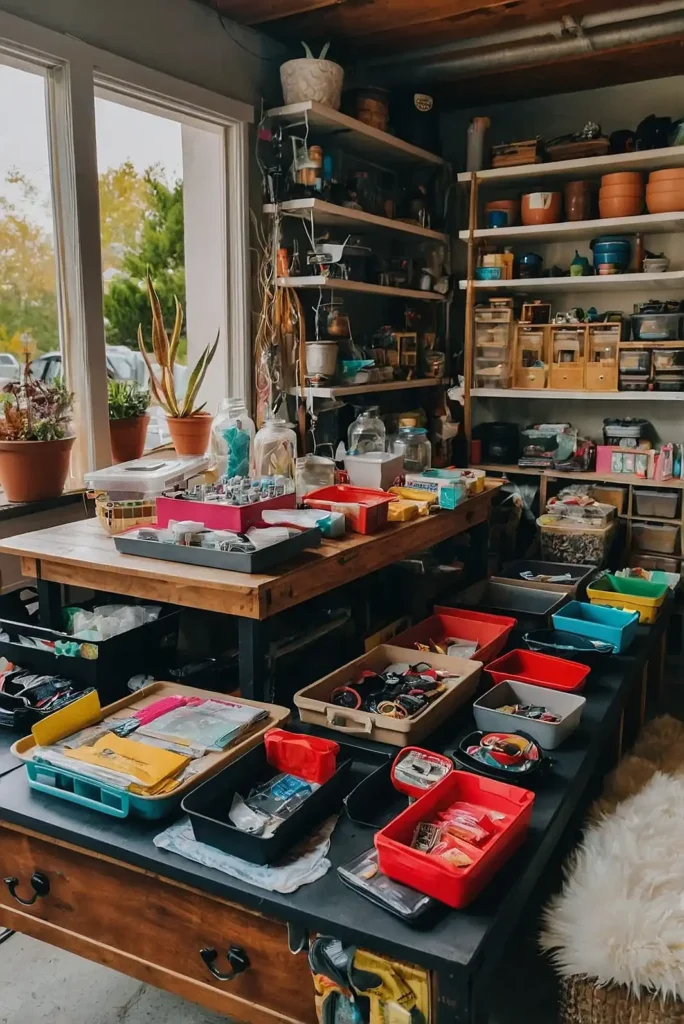
Set up tables at varying heights to create visual interest and maximize your display space.
Use standard folding tables as your base level, with sturdy boxes or crates to create elevated platforms.
The multi-level approach allows shoppers to see more items at once without digging.
Reserve higher spots for eye-catching or valuable items that deserve special attention.
This retail-inspired technique prevents your sale from looking flat and helps items stand out from the crowd.
3: Pre-Sale Inventory List

Create a simple inventory spreadsheet listing major categories and approximate item counts before setting up.
This preparation helps you determine space requirements and identify any gaps in your offerings.
Include columns for suggested pricing to maintain consistency across similar items. The inventory process also helps you mentally prepare to part with your belongings.
Review your list against successful garage sale forums or local Facebook groups to ensure you’ve included high-demand categories.
4: Clothing Organization System

Display clothing on portable racks sorted by type, size, and gender rather than piling in boxes.
Invest in inexpensive hangers in bulk to create a boutique-like browsing experience.
Group children’s clothing by age/size with clear signage for easy navigation. For folded items like t-shirts or jeans, use shallow boxes labeled with sizes and prices.
This professional presentation keeps clothes wrinkle-free and significantly increases their perceived value.
5: Early-Bird Box Strategy
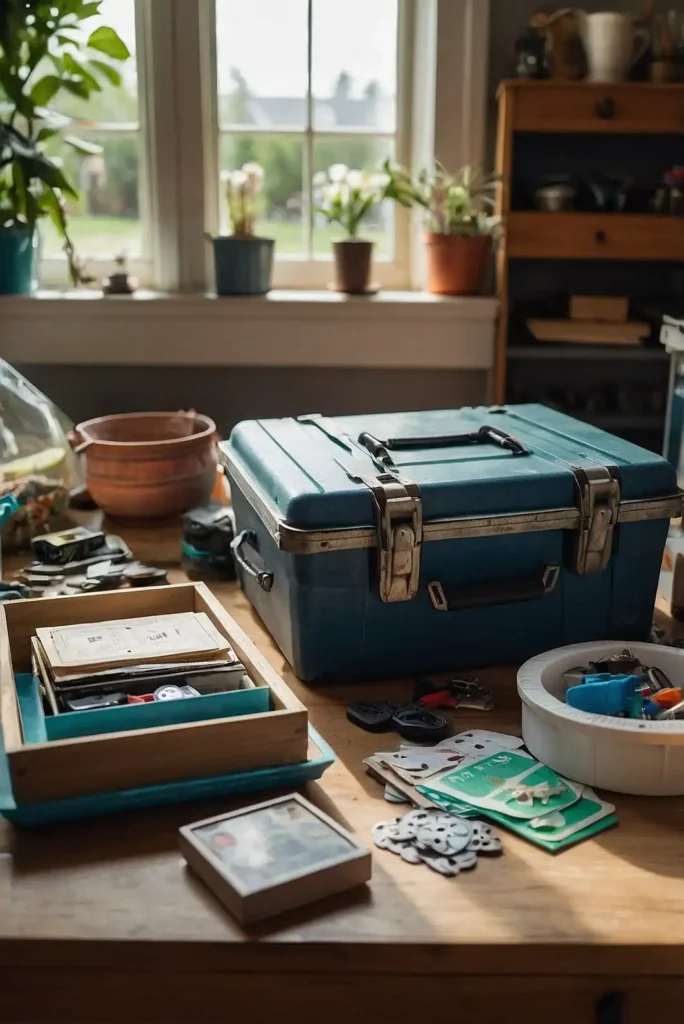
Prepare a special “early bird” box containing particularly desirable items that will entice serious shoppers to arrive at opening time.
Advertise this special feature in your sale listings.
Include collector’s items, brand-name goods, or trendy pieces that will create excitement.
This strategy creates opening momentum and establishes an energetic atmosphere.
Limit these items to genuinely desirable pieces rather than items you’re simply eager to sell.
6: Price-Based Groupings

Create color-coded sections based on price points for small, miscellaneous items.
Group all $1 items in one area, $5 items in another, making quick shopping possible for bargain hunters.
Use colored stickers or signs to clearly identify each price zone. This system reduces the need for individual price tags on lower-value merchandise.
Shoppers appreciate the straightforward approach and often purchase more when prices are immediately clear.
7: Mobile Payment Preparation

Set up mobile payment options like Venmo, PayPal, or Cash App before your sale to accommodate cashless shoppers.
Create simple instruction cards with your payment information for easy reference.
Test your systems before sale day to ensure everything works properly. Position these payment instructions near your checkout area with clear signage.
Many shoppers will spend more when they aren’t limited by the cash in their wallet.
8: Designated Testing Station
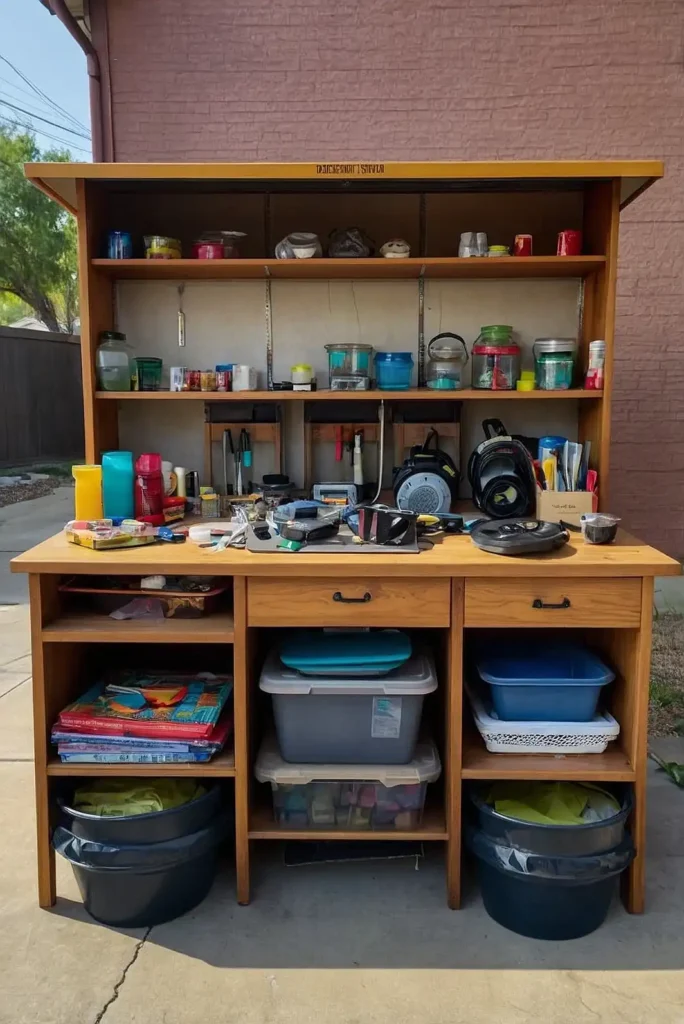
Create a dedicated testing area with extension cords and batteries where shoppers can verify that electronics and battery-operated items work properly.
This transparent approach builds trust and increases sales.
Position this station near your electronics section for convenience. Keep basic testing supplies like batteries, light bulbs, and power strips readily available.
This simple setup eliminates buyer hesitation about purchasing used electronic items.
9: Kids’ Entertainment Corner

Set up a small play area with inexpensive activities to keep children occupied while parents shop.
Simple sidewalk chalk, a few toys, or coloring books can dramatically increase shopping time.
Position this area within sight of the main shopping space for safety.
This thoughtful addition makes your sale more appealing to families with young children.
Parents shop longer and spend more when their children are happily entertained.
10: Strategic Item Placement
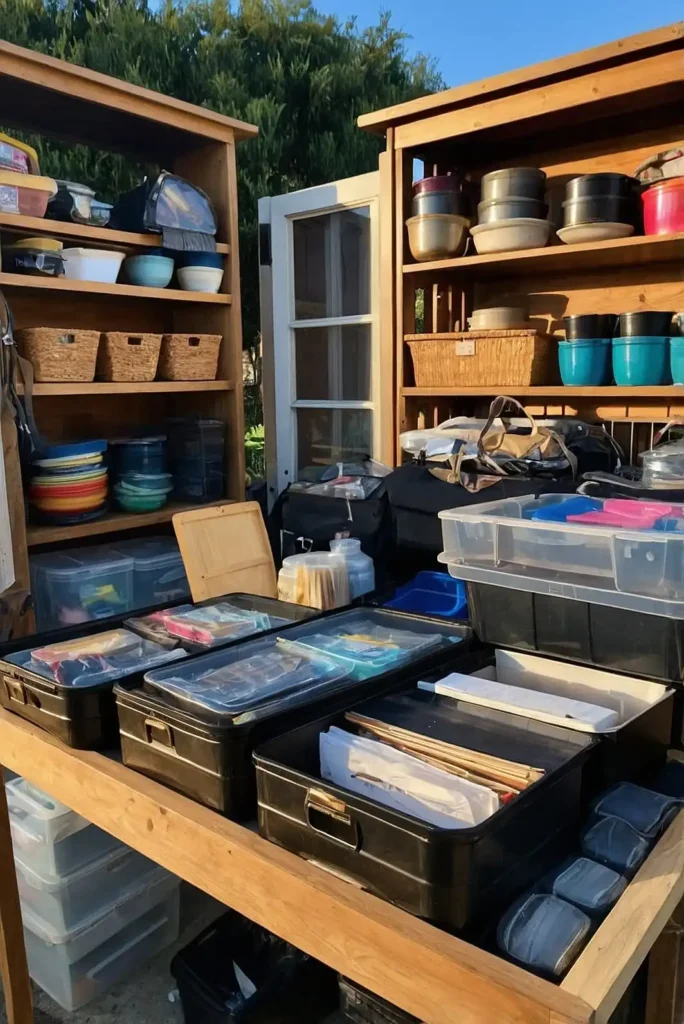
Position your most attractive, high-value items near the entrance to create an excellent first impression.
This retail technique, known as “merchandising,” sets positive expectations for the entire sale.
Use these attention-grabbing items to draw shoppers in from the street.
Save some equally impressive pieces for the back areas to encourage complete browsing.
This strategic approach prevents your best items from being hidden behind less desirable merchandise.
11: Bulk Discount Signage
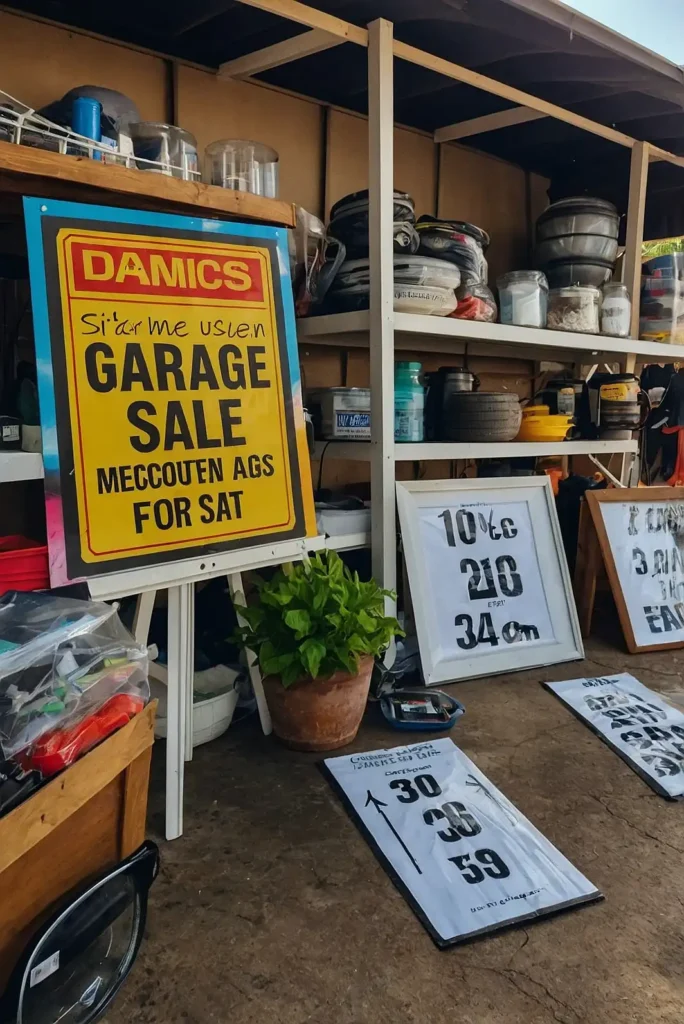
Create clear signs advertising quantity discounts to encourage multiple purchases.
Simple offers like “All books $2 each or 3 for $5” motivate shoppers to buy more than they initially intended.
Apply this strategy to categories with abundant inventory you’re eager to move. The psychology of getting a “deal” often results in higher total sales.
Prepare these signs before sale day to avoid hastily written afterthoughts that appear unprofessional.
12: Box-of-the-Hour Specials

Prepare special “hourly deal” boxes unveiled throughout your sale to maintain excitement and encourage return visits.
Announce each upcoming reveal to create anticipation.
Fill these boxes with genuinely desirable items at special prices. This retail technique creates urgency and rewards shoppers who stay longer or return later.
Schedule your reveals strategically to address typically slower periods during your sale day.
13: Freebie Box Strategy
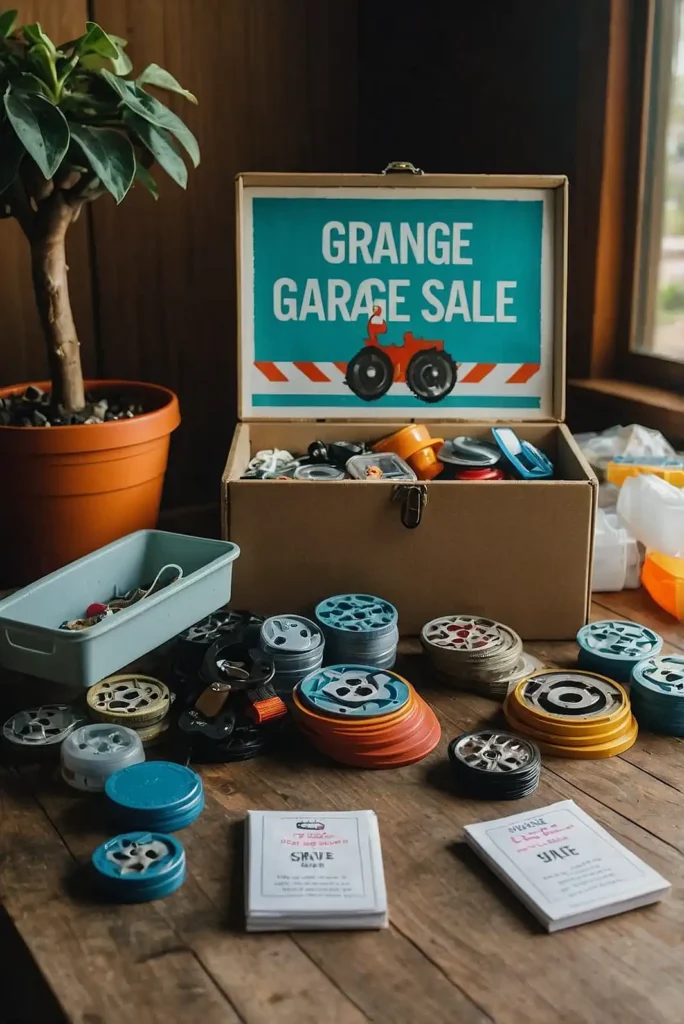
Create a clearly marked “FREE” box near your checkout area with decent quality items that complement your paid merchandise.
This goodwill gesture often leads to increased purchases of regular items.
Refresh this box periodically throughout the day with new additions.
The psychological principle of reciprocity makes shoppers more likely to buy something after receiving something free.
This approach works better than drastically discounting items that still hold value.
14: Weather-Ready Organization

Prepare contingency plans for protecting your merchandise in case of unexpected weather changes.
Keep plastic tarps, tent canopies, or large garbage bags easily accessible.
Identify which categories need priority protection from sun or rain. Practice your quick-coverage system before sale day to ensure efficiency.
This preparation prevents last-minute scrambling that can damage goods or create a negative shopping experience.
15: Bag and Wrapping Station

Create a dedicated area with shopping bags, newspaper, and bubble wrap for fragile purchases.
This thoughtful service encourages shoppers to buy delicate or awkwardly shaped items.
Stock various sizes of bags collected from your own shopping trips. Position this station near your checkout area for convenient final wrapping.
This small courtesy significantly improves the customer experience and prevents damaged items before buyers get home.
16: Visible Security System
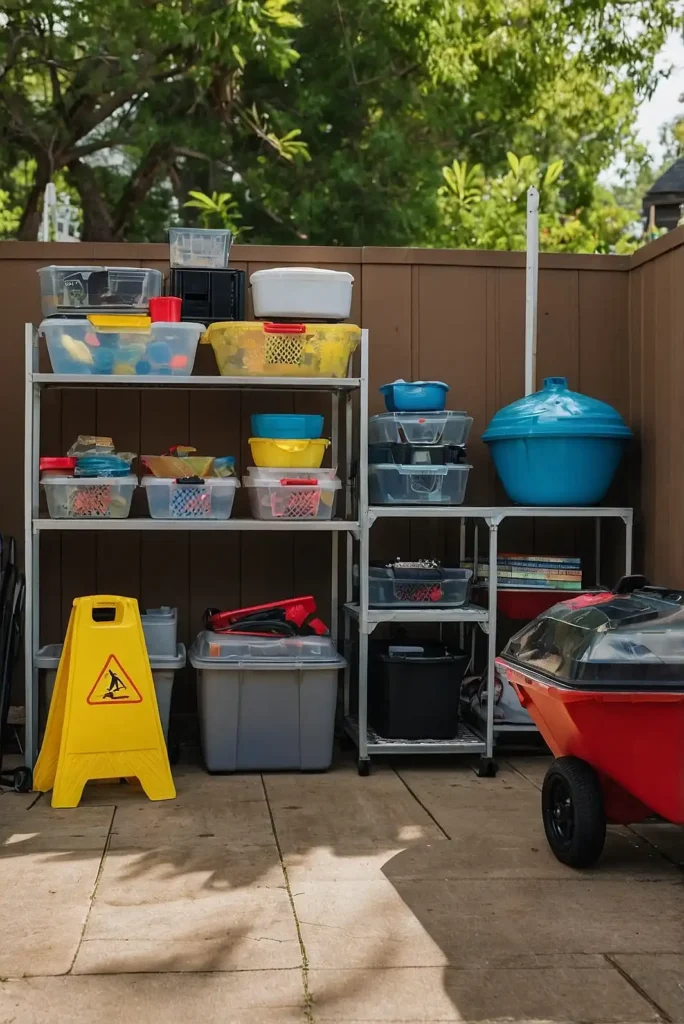
Position a clearly visible money management system like a cashier’s apron, lockbox, or fanny pack to deter potential theft.
Never leave your money collection point unattended during the sale.
Designate one person to handle all transactions if possible.
Regular money transfers to a secure indoor location reduce the amount of cash exposed at any time.
This visible security deters opportunistic theft without creating an unwelcoming atmosphere.
17: Digital Sale Catalog

Create a simple digital catalog of your higher-value items to share on community Facebook pages or Nextdoor groups before your sale.
This pre-marketing generates interest in specific pieces. Include clear photos and brief descriptions of standout items.
This advance promotion brings targeted shoppers specifically interested in your best merchandise.
The digital preview gives serious buyers a reason to prioritize your sale over others happening the same day.
18: Half-Price Time Strategy
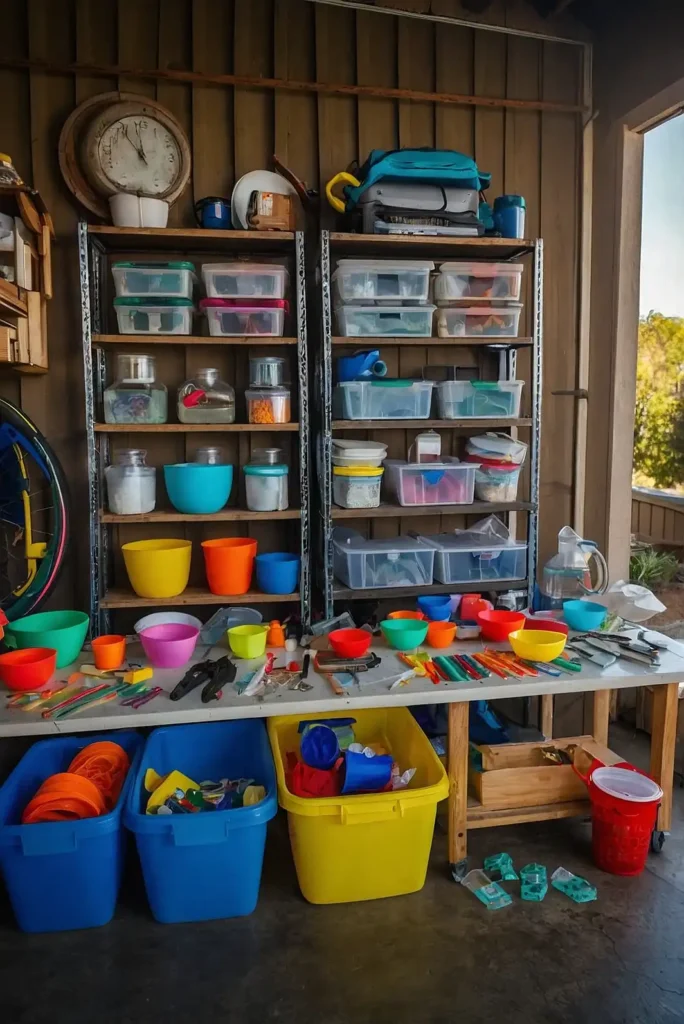
Advertise a specific time when certain categories will be discounted to half price. This planned markdown creates a reason for shoppers to return later in the day.
Focus these discounts on categories you’re most eager to clear out.
The scheduled nature of this strategy prevents early shoppers from waiting around for potential price drops.
This approach maintains higher prices during peak morning hours while still moving remaining inventory later.
19: Baked Goods Addition

Offer simple homemade cookies or brownies for a small price or as a free courtesy with purchases.
The aroma creates a welcoming atmosphere that encourages shoppers to linger longer.
Package items individually with simple ingredient lists for allergy concerns.
This unexpected hospitality creates goodwill and memorable positive associations with your sale.
Shoppers who feel welcomed and appreciated typically spend more and haggle less.
20: Mirror and Try-On Area

Set up a secure full-length mirror with a small privacy screen for clothing shoppers to check fit and appearance.
This fitting room alternative significantly increases clothing sales.
Position in a partially secluded yet visible area for comfort and security. Add a small chair or bench nearby for convenience when trying on shoes.
This thoughtful addition transforms casual browsers into serious clothing buyers.
21: End-of-Sale Plan

Prepare a specific strategy for unsold items before your sale begins.
Research local donation centers, consignment shops, or online selling options with their requirements and hours.
Pack donation-ready boxes as the sale winds down for efficient transition. This advance planning prevents unsold items from returning to your storage spaces.
Schedule donation drop-offs for the same day when possible to maintain your decluttering momentum.
Conclusion
Well-organized garage sales create better experiences for both sellers and shoppers.
Implement these strategies to maximize your profits, minimize stress, and ensure your unwanted items find happy new homes.







